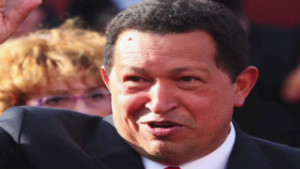At least, so said his deputy, Nicolas Maduro.
While the idea may seem
alien to some, Chavez will be the latest in a line of leaders whose
remains have been embalmed and put on show in a glass casket.
Perhaps the best known is
Russia's Vladimir Lenin, whose body still lies in a mausoleum in
Moscow's Red Square, nearly 90 years after his death.
Others include Stalin, China's Mao Zedong, Vietnam's Ho Chi Minh, and North Korea's founding leader, Kim Il Sung.
U.S. President Abraham
Lincoln was also
embalmed following his assassination in 1865, enabling
his body to be taken on its winding, three-week train journey back to
Springfield, Illinois, with open-casket memorial services along the way.
For Nina Tumarkin, author
of "Lenin Lives! The Lenin Cult in Soviet Russia," the decision to
embalm Lenin in 1924 -- the first modern leader to have his corpse
preserved in this way -- was a reflection of a tumultuous period in
early Soviet history.
"Many people feared that
the regime could not survive his death, so after the announcement was
made, Moscow became something of an armed camp," said Tumarkin, a
professor of Russian history at Wellesley College, Massachusetts.
The leaders were unsure
whether to hold a lying-in-state period, for fear that the people would
not come, she said. As it turned out, some 750,000 braved the bitter
January cold, standing in line for long hours to catch a glimpse of the
corpse.
As a result, the leaders
decided to make it a "going concern," she said, extending the period
first to 40 days, the period in the Russian Orthodox tradition when Mass
is said daily for the dead, and then installing his glass sarcophagus.
They first placed it in a wooden mausoleum before building the stone one
that stands today.
Nine decades later and
half a world away, crowds of Venezuelans similarly lined up to see
Chavez's body as it lay in state at a military academy before the
funeral Friday.
So many came to see the body that the viewing was extended for another seven days.
Giving details of his
funeral, Maduro said Chavez would be embalmed "just like Lenin (and) Mao
Zedong" and laid to rest at a military museum where generations of
Venezuelans will be able to visit a man who for many was
larger-than-life.
Polarizing move
In Lenin's case, the decision was -- and is still -- controversial.
Even at the time of the
communist leader's death, many Russians were outraged by the idea of
embalming him, Tumarkin said. Many more today would like to see the body
buried.
But the polarizing move
came against the backdrop of the discovery 15 months earlier of the
Egyptian pharaoh Tutankhamen's tomb. "It took the imagination of the
world by storm," Tumarkin said, and it sowed the idea that the body of a
leader could be preserved for thousands of years to come.
It also tapped into a Russian Orthodox belief that the body of a true saint does not decay, she said.
"Most important from a
political point of view, the leaders who followed Lenin at the time, or
who would be competing for the mantle of general secretary of the party,
were men who were really terrified that the whole system was going to
come falling down," she said.
That fear had already
prompted them to begin the process of "making Lenin eternal" through his
writings and portraits. With his extended lying in state, the Russian
people also had a kind of shrine to visit, Tumarkin said, again
channeling the religious tradition.
When Lenin's body was
put on display, the embalmers compared their work to that of the ancient
Egyptians -- who actually had used very different methods -- and the
message sent out to the rest of the world was that this should be seen
as a demonstration of superior Soviet science, she said.
At the same time, Lenin's symbolic presence lent the next generation of leaders an extra legitimacy, she said.
And as the cult of Lenin
swelled in the 1920s and 1930s, and was revived under Khrushchev in the
1970s, his body could still be viewed, Tumarkin noted. Other Communist
leaders, such as Mao, followed his lead in later decades.

No comments:
Post a Comment